
Alsace is a cultural region and a territorial collectivity in eastern France, on the west bank of the upper Rhine next to Germany and Switzerland. In January 2021, it had a population of 1,919,745. Alsatian culture is characterized by a blend of German and French influences.

Bas-Rhin is a département in Alsace which is a part of the Grand Est super-region of France. The name means 'Lower Rhine', referring to its lower altitude among the two French Rhine departments: it is downstream of the Haut-Rhin department. Both belong to the European Upper Rhine region. It is, with the Haut-Rhin, one of the two departments of the traditional Alsace region which until 1871, also included the area now known as the Territoire de Belfort. The more populous and densely populated of the pair, it had 1,152,662 inhabitants in 2021. The prefecture is based in Strasbourg. The INSEE and Post Code is 67.

Sélestat is a commune in the Grand Est region of France. An administrative division (sous-préfecture) of the Bas-Rhin department, the town lies on the Ill river, 17 kilometres (11 mi) from the Rhine and the German border. Sélestat is located between the largest communes of Alsace, Strasbourg and Mulhouse.

The arrondissement of Strasbourg-Campagne is a former arrondissement of France in the Bas-Rhin department in the Alsace region. It was disbanded at the 2015 arrondissements reform, and its communes were assigned to the arrondissements of Saverne, Strasbourg, Haguenau-Wissembourg and Molsheim. It had 104 communes, and its population was 284,815 (2012).
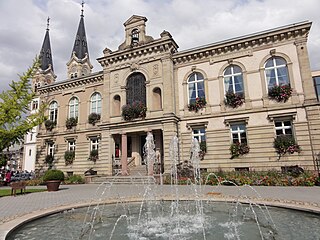
Illkirch-Graffenstaden is a commune in the Bas-Rhin department in Grand Est in north-eastern France. It is the second-largest suburb of the city of Strasbourg, and is adjacent to it on the south-southwest. Illkirch-Graffenstaden's population more than doubled in fifty years.

Andlau is a commune in the Bas-Rhin department in Alsace, Grand Est region of northeastern France.

Alteckendorf is a commune in the Bas-Rhin department in the Grand Est region of northeastern France.

Barr is a commune in the Bas-Rhin department in the Alsace region of north-eastern France.

Gertwiller is a commune in the Bas-Rhin department in Alsace in north-eastern France.
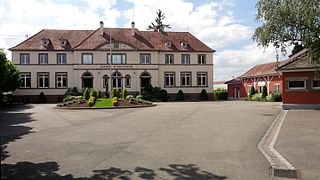
Entzheim is a commune, in the Bas-Rhin department in Grand Est in north-eastern France.
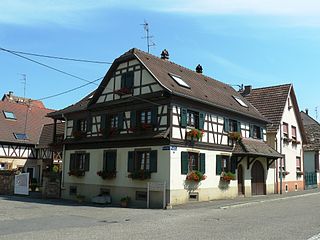
Krautergersheim is a commune in the Bas-Rhin department in Alsace in north-eastern France. It lies between Strasbourg and Obernai.

Herrlisheim is a commune in the Bas-Rhin department in Grand Est in north-eastern France. The town dates from the 8th century. Herrlisheim was the scene of very heavy fighting during Operation Nordwind, an offensive launched by the German Army during World War II that inflicted considerable damage to the town.

Hilsenheim is a commune in the Bas-Rhin department in Alsace in north-eastern France.

Limersheim is a commune in the Bas-Rhin department in Alsace in north-eastern France. It is a rural tourist destination, boasting several half-timbered houses.

Meistratzheim is a commune in the Bas-Rhin department in Grand Est in north-eastern France.

Ottrott is a commune in the Bas-Rhin department in Grand Est in north-eastern France. It lies southwest of Strasbourg. The vineyards in and around Ottrott produce the red Rouge d'Ottrott, a geographical denomination within the registered designation of origin Alsace AOC.
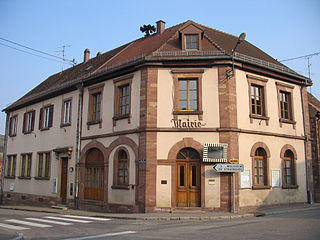
Soultz-les-Bains is a commune in the Bas-Rhin department in Grand Est, France.

Wasselonne is a commune based in the Bas-Rhin department in north-eastern France, more precisely, in the Grand Est region. The oldest firm of unleavened bread in France: Etablissements René Neymann, is located in this town.
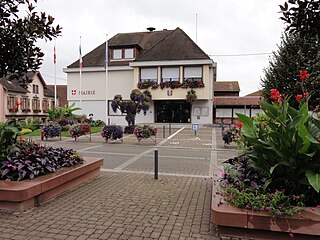
Mommenheim is a commune in the Bas-Rhin department. The department is in the historic Alsace region of France, and is itself within the Grand Est administrative region of north-eastern France.

The arrondissement of Strasbourg is an arrondissement of France in the Bas-Rhin department in the Grand Est region. It has 33 communes. Its population is 494,089 (2017), and its area is 337.6 km2 (130.3 sq mi).
























